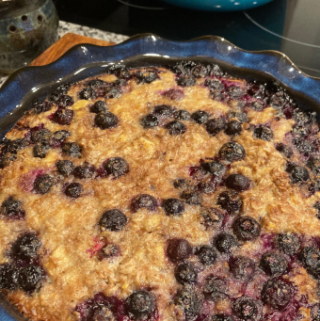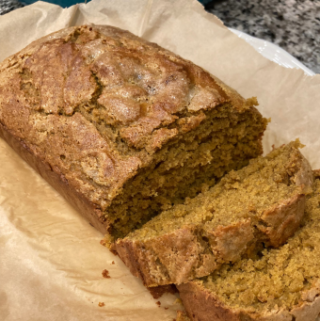
Moms of any age can feel overwhelmed by life. Being a grown-up is hard. There’s laundry to do, mouths to feed, and bathrooms to clean. On one car, the tires need rotating. On the other, the oil needs to be changed. The air conditioner in the house should be serviced. The garden needs water, the floors should be mopped, and the personal property taxes are due. The list of responsibilities is never-ending. I’ve always been one to keep a checklist. I generally stay on top of tasks. You might even say that I thrive with the intentionality of a to-do list. This has always been so, but things seem to be changing for me. I think it’s safe to say that I’ve reached my perimenopause years. Even my beloved checklists feel overwhelming. This article is my attempt to process how to navigate overwhelm as a perimenopausal mom.
WHAT IS PERIMENOPAUSE?
Perimenopause is the period of time when your ovaries produce less estrogen and your body transitions to menopause. It can begin as early as your mid 30s and can last up to 10 years. During this time, estrogen levels fluctuate up and down, often erratically, which causes symptoms like irregular periods, hot flashes, insomnia, weight gain, increased belly fat, hair changes, memory loss, vaginal problems, bladder problems, mood shifts, sexual dysfunction, cholesterol-level changes, increased urination, and muscle or joint aches.
thepauselife.com
That’s a fun list of symptoms. Personally, in my mid-forties, I’ve experienced much of that list myself. My primary frustration currently is a feeling of overwhelm. Tasks that used to feel routine feel like a crushing burden. My instinctual response to this feeling of overwhelm is not healthy. I retreat. Instead of working on one task at a time and checking off things on my list, I do nothing. Often, my survival mechanism is to withdraw to a dark room where I watch hours of Netflix on my computer. I’m not proud of it. I’m often ashamed of the time I spend in retreat, because I’m a doer. I get things done. When overwhelm wins and I fall back, I feel like I’ve lost. It’s almost like I feel paralyzed. It’s all I can do to just exist. I feel frustrated. And it’s not “me.”

THE CONNECTION BETWEEN PERIMENOPAUSE AND ADHD
Dr. Mary Claire Haver, founder of The ‘Pause Life, has recently dedicated her OBGYN practice to the care of menopausal women. She encourages women to address menopause with diet, exercise, appropriate lifestyle changes, and supplements as needed. In this article, she acknowledges the link between menopause and ADHD-like symptoms. I think this is what I’m feeling when I retreat.
ADHD symptoms in women include forgetfulness, difficulty with time management, impulsiveness, difficulty concentrating, problems completing tasks, difficulty making decisions, disorganization, low tolerance for people, and feeling overwhelmed. While I don’t think I would entirely fit a true ADHD diagnosis, I have felt many of the things on this list. Many of these things are new to me. Again, when you’re a doer who normally thrives on a checklist, it feels foreign to be paralyzed by a long list of to-dos. It feels unnatural. For me, it produces a sense of failure or disappointment within myself.
When I was sick from mold toxicity, the path back to myself felt long and endless, but there was a way through. In this too, I know that there is a way to the other side. Below, I attempt to outline my personal plan of action. (The irony is that this too feels overwhelming.)
DIET
I’m an advocate for real food. I feel best when I eat whole foods. I know that I feel good in my skin when I primarily eat fresh fruit and vegetables. Even with this passion for real food and a knowledge of what’s best for my body, I often make poor choices. My poor choices are not doughnuts or fast food, but they are poor choices for my body, nonetheless. I’ve let my blood sugar ride the roller coaster when I should have worked to balance it throughout the day.
To combat my specific symptoms of perimenopause, I intend to lower my intake of sugars, focus on healthy fats, and curb my daytime snacking. That late afternoon granola bar isn’t doing me any good. It’s not serving my nutritional needs, but is instead perpetuating my ride on the roller coaster. A handful of nuts and a carrot would be a better alternative. I plan to prepackage my afternoon snack so that I’ll reach for that instead of something that works against my current nutritional needs.
Also, I’ve developed a bad habit of skipping breakfast. This is not intermittent fasting as I begin each morning with coffee and oat milk. I often find that I’m not hungry in the morning, but this too is a sign of blood sugar imbalance. I’m going to place my focus on a nutrient dense breakfast each morning. I’ll cycle back through some of my own recipes to encourage myself to eat when I wake up. These Breakfast Tacos or this Paleo Breakfast Casserole are both a great place to start.



I recommend these two articles from Dr. Will Cole regarding balancing blood sugar:
- 10 Easy Ways to Maintain Healthy Blood Sugar Balance
- The Best Diets for Blood Sugar Balance, According to a Functional Medicine Expert
EXERCISE
I’m going to preach to myself here too. Five million sources around the web all testify to the benefit of exercise where perimenopause is concerned. Exercise alleviates fatigue and helps to relieve stress. It will increase bone-mineral density and improve sleep quality. For the sake of my emotions, I know that I need to be more disciplined about moving my body. One of my practitioners has recommended that I exercise before noon, specifically. This will help to regulate my circadian rhythm and nourish my adrenal health.
I have a rebounder. My personal plan is to rebound for five minutes a day, walk each morning, and also begin some weight training at home. I already attend yoga once a week. My body feels so good after yoga class. I should probably work in a bit of yoga at home as well.
Honestly, even a plan for exercise feels overwhelming. I intend to find an accountability partner for this part of my plan. I think most of all, I just need someone to call me out when I’ve run back into sloth mode instead of praising God for the ability to move my body.

SUPPLEMENTS
Several months ago, my period was ten days late. For those ten days, I felt terrible. I was bloated. I was mad at everyone all the time. My only emotions were anger and irritation. I said something to my practitioner the next time we met. She said, “Oh, Jen. Don’t suffer. I can help you through with the right supplements. Let’s support your body so that you don’t have to feel that way again.” That was comforting, but it also made me feel kind of dumb too. During those terrible ten days, my brain never thought to reach out. I even had all the right supplements in my cabinet. I just didn’t connect A to B.
Now that I’ve played around with a what I have, I can say that Simplex F from Standard Process is probably my favorite thing to lean on right now. It contains calcium, sodium, mag citrate, bovine ovary extract, bovine adrenal extract, bovine pituitary extract, and bovine thyroid extract. Of all the things in my cabinet, I think this make the most noticeable difference for me right now.
THYROID HEALTH
Aside from finding the right supplements to support your body, I’d encourage you to also keep an eye on your thyroid labs. An under-active thyroid can cause feelings of depression, anxiety, overwhelm, and apathy. An over-active thyroid can cause feelings of anxiety, irritability, mood swings, and tiredness. Both of these have overlap with symptoms of perimenopause.
To properly assess the thyroid, request these labs: TSH, FreeT3, FreeT4, TPO Antibodies, Thyroglobulin Antibodies, and ReverseT3. According to functional medicine standards (which differ from clinical standards), TSH should be under 2 to be considered optimal. FreeT3 should be in the top 25% of range. FreeT4 should be in the top 50% of range. If TPO or Thyroglobulin Antibodies are present, you have Hashimoto’s Thyroid Disease. (Hashimoto’s is an autoimmune attack on the thyroid.) ReverseT3 should be below 15. The ratio of FreeT3 to ReverseT3 should be above 20.
I have Hashimoto’s Thyroid Disease and need to keep my numbers in check to mitigate symptoms of disease. Natural Desiccated Thyroid (NDT) and Low Dose Naltrexone (LDN) can both be prescribed by a physician. NDT replaces thyroid hormone that is needed for an under-active thyroid. LDN boosts the immune system, activating the body’s own natural defenses.
If you are diagnosed with Hashimoto’s Disease, I highly recommend the Facebook group Hashimoto’s 411 as a place to learn about the disease and learn how to advocate for yourself in a medical system that is not designed to heal those with chronic conditions.
BEING A PERIMENOPAUSAL MOM
There is no end to the list of challenges faced by perimenopausal moms. I am new to this season of life. (At least I’m new to recognizing the name for this season of life.) I believe that addressing the challenges of this season will make us better moms. When we take care of ourselves, we model healthy habits for our children. Everyone ages. Our children will too.
It’s okay to retreat sometimes. Those moments alone can be recharging, but I think it’s important to admit when those moments alone are oppressive. We should admit to ourselves when the feelings of overwhelm have grown too large. As a doer, who sometimes loses the drive to “do,” it’s time to take care of myself. That loss of drive is a sign that my body and mind need attention.
Being a perimenopausal mom is hard, but I hope with the age comes a bit of wisdom. When my inner sloth emerges, I hope that I’ll be wise enough to recognize its appearance as a symptom of something greater. Everything in life needs balance. Moms do too. Our bodies need balance. We have the tools to provide for our needs, if only we can find the will to do so.

I want more of this.

Not that.
(P.S. Here’s another resource. I’m new to this podcast, but I like what I see: Perimenopausal Mamas)






Leave a Reply
You must be logged in to post a comment.